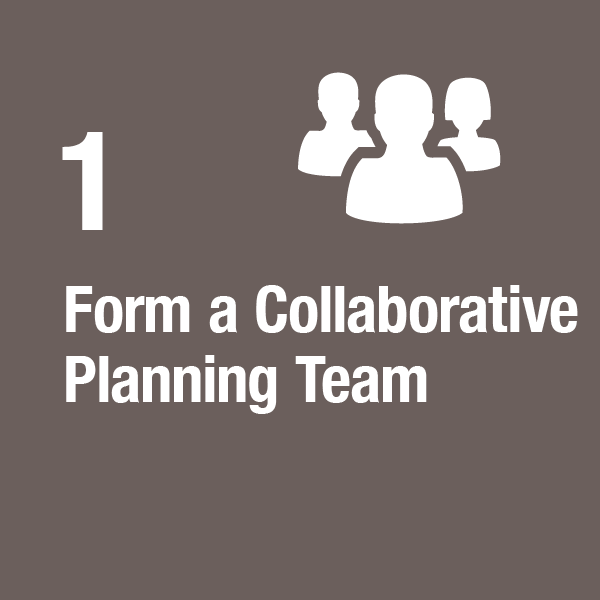Share Your Feedback
The REMS TA Center seeks your feedback to ensure that the Website is continually enhanced to meet your needs.
Step 1: Form a Collaborative Planning Team
Lessons learned from experience indicate that operational planning is best performed by a team. Case studies reinforce this concept by pointing out that the common thread found in successful operations is that participating organizations have understood and accepted their roles. Close collaboration between schools and community partners ensures the coordination of efforts and the integration of emergency management plans.
Identify Core Planning Team
The core planning team should include representatives from a wide range of school personnel, including, but not limited to the following: administrators, educators, school psychologists, nurses, facilities managers, transportation managers, food personnel, and family services representatives. It should also include student and parent representatives, and individuals and organizations that serve and represent the interests of students, staff, and parents with disabilities, and others with access and functional needs, as well as racial minorities and religious organizations, so that specific concerns are included in the early stages of planning. Additionally, the core planning team should include community partners such as first responders, local emergency management staff, and others who have roles and responsibilities in school emergency management before, during, and after an incident. This includes local law enforcement officers, emergency medical services (EMS) personnel, school resource officers, fire officials, public and mental health practitioners, and local emergency managers. Their expertise will inform the development, implementation, and refinement of the school emergency operations plan (EOP).
The planning team should be small enough to permit close collaboration with first responders and other community partners, yet large enough to be representative of the school, its families, and its community. It should also be large enough as to not place an undue burden on any single person.
Form a Common Framework
A shared approach facilitates mutual understanding, coordination, and execution of the emergency management strategies as well as works from a common command structure. All team members need to take time to learn each other’s vocabulary, command structure, and culture in order to facilitate effective planning.
Define and Assign Roles and Responsibilities
Each person involved in the development and refinement of the plan should know her or his roles and responsibilities in the planning process.
Determine a Regular Schedule of Meetings
School emergency management planning is an ongoing effort that is reinforced through regularly scheduled planning meetings. Establishing a flexible but regular schedule of meeting times will facilitate greater collaboration, coordination, and communication among team members and will help solidify crucial relationships.
Step 1 Outcome
After completing Step 1, the school has formed a planning team with representatives from all necessary stakeholders. The planning team has taken initial steps to form a common framework, define and assign roles and responsibilities in the planning process, and set a schedule of planning meetings.



